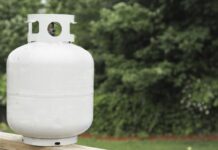A study by the First Street Foundation, a climate risk NPO, found that approximately 14.7 million properties in the US are at risk of flooding. Extreme flooding is not only dangerous but causes thousands of dollars worth of property damage. The worst part about home flooding is that it’s super hard to predict.
One day, you come home from a two-week trip only to find your home is literally soaking in water. Some people get a good night’s sleep and wake up to a flooded home. If you’ve ever been through anything close to this, you know how frustrating the entire experience can be.
There are many causes of house floods. It could be because of bad weather, sewer backup, or a burst pipe. Regardless of the cause, the next steps you take after you discover your home is flooded will be crucial in mitigating the damage and health complications.
Today’s post is the ultimate guide to dealing with a flood at home.
Don’t Panic
The last thing you want to do after you walk into your flooded property is panic. This is easier said than done because panicking is the natural reaction when you splatter into your flooded home. Regardless of the initial shock, it’s important to keep calm and assess the situation with a clear head.
When you find out your home is flooded, take a deep breath because everything will be okay. In cases of catastrophic flooding, it’s normal to feel a heavy sense of grief because of the massive loss you will incur.
It’s okay to feel sad after losing so much in a flood. However, don’t let grief paralyze you.
Give yourself some time to come to terms with the situation, and you’ll be back to your cheerful self in no time. Take a deep breath and grieve freely, knowing that everything will be okay eventually.
Also, contact your home insurance provider and see how they can help. For instance, if you get home insurance with LoPriore, you’ll get round-the-clock assistance in the event of flooding or any other calamity.
Stop The Source Of The Flooding
Once you calm down, the next step is to stop the source of the flooding. This is, of course, in cases where the flooding wasn’t a result of natural phenomena.
If it’s an open valve, shut off the valve; if it’s a broken pipe, seal the pipe. If you’re unable to seal the source of the flood, shut off the main water supply to prevent the problem from worsening.
If your home is flooded because of heavy rains or a natural disaster, contact local authorities to open the flood drains. That way, the water can drain away and recede to manageable levels. The less water you have, the easier it will be to remove it.
Wear Protective Clothing
If the flooding was a result of a burst sewage pipe or a burst pipe, it’s important that you wear proper protective clothing when washing your flooded home. That’s because sewage water is full of all kinds of bacteria that lead to serious health complications. It also contains chemicals that may irritate your skin.
To be on the safe side, wear protective clothing like boots, rubber gloves, and a face mask. This will help keep you from coming into contact with harmful substances or inhaling them. Once you’re fully clad in protective clothing, you can move to the next step.
Turn Off The Circuit Breaker And Fuse Switches
Flooding is a huge safety hazard for the home’s occupants. It’s important to take adequate safety measures to reduce the number of safety hazards in your flooded home.
Everyone knows how dangerous standing water and electricity can be when they combine. That’s why you should rush to the fuse box and turn off the main breaker and all the other fuse switches. This will help eliminate any life-threatening electrocution hazards around the home.
In cases of severe flooding, it might be a good idea to call a professional electrician to ensure maximum safety. The electrician will inspect the premises, clean, and dry up areas near electrical fixtures.
After turning off the water and electricity, be careful not to touch your nose or mouth, even with gloves on. There’s a chance that the water is polluted with different bacteria, chemicals, and fungi. Touching your nose or mouth introduces these harmful substances into your body, and you may fall ill.
Leave The Area(For Now)
After you turn off the electricity, it’s important to leave the area in a safe and dry spot. This is especially true when you have a burst sewage pipe because of how toxic the water might be.
You can choose to camp in the backyard or even at a neighbor’s home. It’s important to stay close to your home to be fully aware of any new developments. Before leaving, make sure you account for everyone, including pets, and that everyone is okay.
For catastrophes and natural disasters, you must find a temporary shelter to pitch a camp. Call the local authorities and they’ll inform you of any shelters where you can call home temporarily.
Check The Home’s Structural Integrity
After a good night’s sleep, you can visit the home to check if everything is alright. The first thing you want to confirm is whether your home is still structurally sound. Sometimes flooding can compromise the structural integrity of homes, making them unsafe to inhabit.
Look for obvious signs of structural deformation like buckled walls or uneven floors, among others. If the damage is far-reaching, it might be a good idea to call a structural engineer before moving back into the house. That way, the engineer can assess the extent of the damage and the risk of the house collapsing.
Don’t forget to call the utility companies in case of any damage to utility lines. This means any damage to gas, electricity, water, or sewer lines. They should be able to fix it for you in no time.
If you get even the slightest hint that the house is structurally unsound, don’t go back yet. Await professional opinion from a licensed engineer.
Write Down Everything
Once the house starts drying up, you can enter the house to check the extent of the damage. Bring a notebook and pen with you so you can document in clear detail the flood damage. You can also use your phone to take photos or film the damage.
Documenting the damage will make it easier to process your claim when you file it. It allows you to show your insurer the degree of damage and what compensation you’re eligible for. For ultimate safety, remember to wear protective clothing while documenting damage.
Remove Standing Water
After you’ve documented all the flood damage, it’s time to roll up your sleeves and get to work. Here, you’ll have to remove all the standing water from your home. However, before doing so, make sure you get the green light from your insurer.
You can either use buckets to bail out the water. Alternatively, you can use a hose and siphon all the water out of your house. If you choose to use buckets, be careful not to strain your muscles because of the repetitive motion.
For severe flooding cases, you can consider renting a sump pump to get rid of the excess water. The sump pump will get rid of large amounts of water, and then you can get a wet vacuum to clean up the remaining water. For minor floods, a mop and a squeegee will be enough to remove the water.
Remember, the faster you get rid of the water, the better it is for you. Ask for help from your friends and neighbors to help speed up the process.
Salvage What’s Left
Scrummage through your items and look for stuff that you can save. If you find a few, take them out to air dry. While doing so, remember to document all the items for insurance purposes.
Mold takes between 24 and 48 hours to grow, so start salvaging your items before mold sets in. After saving a few items, compile a list of all the items you saved and those that were ruined by the flood. Also, take a few pictures while you’re at it.
Dry Everything Out
Now that you’ve removed all the standing water and remaining water pockets, it’s time to dry everything out. Drying everything is super important because mold and fungi can grow on surfaces with the tiniest amounts of water.
The easiest way to dry your property is by leaving all the windows open. You can also try running the AC and heater for the greatest effect. For severe floods, consider hiring dehumidifiers or industrial fans to dry out your home effectively.
Dealing With A Flooded Home Made Easy
Waking up to a flooded home can be devastating, to say the least. However, with the information above, you should be able to deal with house floods accordingly. Don’t forget to liaise with your home insurance provider to get a fair settlement for any flood damage.
Check out the other posts on the site for more informative content.










